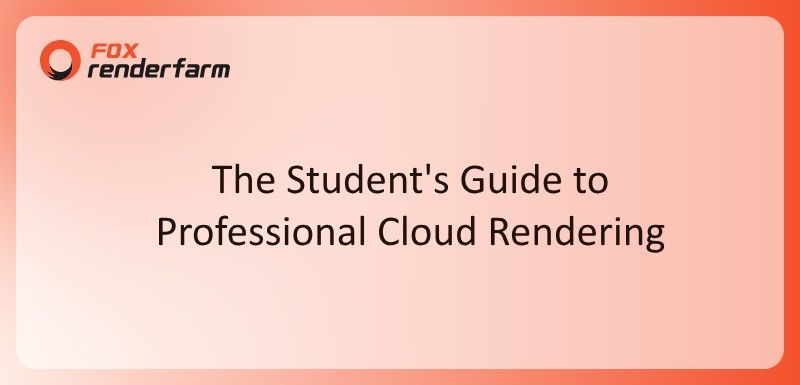Lighting products is not easy, but in this article, the leading Blender render farm, Fox Renderfarm will not only explain the basic concepts but also implement them in different situations so that you can easily light your product.
Why Should You Learn Product Lighting?
Good lighting makes anything look amazing. Plus, it’s a great way to make money. Businesses need high-quality visuals for ads and online stores, and they’re willing to pay for them. On top of that, it’s perfect for your portfolio, allowing you to showcase your skills and attract potential clients.

Basic Concept of Product Lighting
The basic concept that is commonly used to light the product is from three sides:
1. A strong intensity light from the back, which creates strong highlights.

A sharp light from one side, which creates interesting shadows.

A soft light from the opposite side of the sharp light to evenly light the product.

There are additional things required for glossy or transparent materials like glass or bottles, and I will explain those as well.

Practical Lighting Setup
Theory will only take you so far, so let’s jump into the practical part. I am using this keyboard model from Sketchfab, and it has a great design.

Before starting with lighting, you need to set up your camera and product properly. In my case, I have already added a camera and rotated the keyboard slightly to add a dynamic touch.

Step 1: Adding the Backlight
I always start with the highlights. Add an area light and move it to the back of your product. It’s helpful to open a small window where you can see the render view. Increase the intensity of the area light and don’t increase it too much. A value like 50W or 100W should work.

Step 2: Adding the Key Light
Now, place a sharp light on the opposite side of where the product is facing.

Before adding another area light, move the 3D cursor to the center of your model. You can do this in two ways:
- Select your product, press Shift + S, and choose "Move 3D Cursor to Active Mesh."
- Press Shift + Right Click at the center of your product.

Now, duplicate the backlight and press R twice to rotate it around the product. Place it at the side of the product, decrease its intensity, and lower the spread value to make it sharper. This helps create hard shadows and adds depth to the render.

Step 3: Adding the Fill Light
To complete the setup, duplicate the area light and rotate it 180 degrees. Increase its spread so it creates a softer light that brightens the product.

This setup works great for non-glossy products.
Custom Reflections
For glossy products like glass, area lights can cause sharp reflections, which don’t look natural. Instead, use image textures with softboxes which tend to give more realistic reflections. You can download these two high-quality light textures from Patreon for free.

Advanced Techniques for Glossy and Transparent Products
Step 1: Setting Up Emission Planes for Glass
Instead of area lights, use planes with an emission shader combined with a gradient node:
- Add a plane and move it to the back.
- Open the Shader Editor, delete the Principled Shader, and add an Emission node.
- Connect the Emission node to the Material Output and increase the strength.
- To hide the plane from the camera, go to the Object Data tab, under Visibility, and uncheck "Camera."

Step 2: Adding Sidelights with Gradient Textures
- Duplicate the backlight plane and move it to the side.
- Remove the backlight material and create a new one.
- Add an Emission node and a Gradient Texture node.
- Use a Texture Coordinate and Mapping node to rotate the gradient.
- Connect a Color Ramp node and adjust it to create a soft transition.
- Rotate it 180 degrees to position the bright side at the back of the product.

This technique creates smooth fade outs in glossy materials and enhances reflections.
Using Light Linking for Ground Reflections
When adding a ground plane, reflections can be destroyed by strong lights. You can solve this by using light linking:
- Select the light and go to the Light Linking tab.
- Create a new light link and drag your product into it.
- This ensures that the light only affects selected objects.

Recap
- Standard Products: Use a strong backlight for highlights, a sharp key light for shadows, and a fill light to light it all.
- Custom Reflections: For glossy products like glass, area lights can cause sharp reflections, use image textures with softboxes which tend to give more realistic reflections.
- Glossy/Glass Products: Use planes with gradient emission textures instead of area lights for smooth fade outs reflections. Use the same technique as before with a backlight and two emission with gradient planes on both sides.
- Light Linking: Control which objects receive light to improve reflections on the ground.
Product Rendering Tips for Blender Users
Blender users often face significant challenges when rendering products, primarily due to the time-consuming nature of the rendering process. High-resolution textures and complex lighting setups can lead to extremely long render times, which can be frustrating for artists and designers working on tight deadlines. This delay not only hampers productivity but can also affect the overall workflow, making it crucial for users to find effective solutions to speed up their rendering tasks.

Fox Renderfarm offers a reliable solution to the slow rendering speeds commonly experienced by Blender users. As a specialized render farm, Fox Renderfarm utilizes powerful cloud computing capabilities to handle resource-intensive rendering jobs efficiently. With its advanced cloud rendering technology, users can take advantage of fast rendering speeds, significantly reducing wait times and allowing them to focus on creativity rather than technical issues. By choosing Fox Renderfarm, Blender users can enhance their productivity and achieve stunning renders in record time. Don't hesitate—try Fox Renderfarm with their $25 free render coupon today to transform your rendering experience!
Check out Extra3D's video tutorial here:













